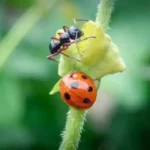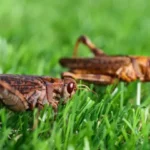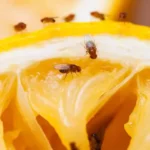If you’ve noticed your greenhouse plants looking under the weather, you probably feel frustrated and eager for solutions. Whether it’s discolored leaves, stunted growth, or a visible infestation, encountering pests can be disheartening. We understand the urgency and are here to guide you through practical, sustainable pest control in greenhouse methods that can help bring your green friends back to health.
Pest control in a greenhouse protects plants from damage and ensures a healthy growing environment. Here are some effective pest control methods for greenhouses:
- Monitor Regularly: Inspect plants for signs of pests, such as chewed leaves, webbing, or sticky residue.
- Cultural Control: Maintain good plant hygiene by removing weeds, fallen leaves, and debris, as these can harbor pests.
- Biological Control: To control pest populations, introduce natural predators, such as ladybugs, predatory mites, or parasitic wasps.
- Mechanical Control: Use physical barriers like screens or row covers to prevent pests from entering the greenhouse.
- Traps: Use sticky or pheromone traps to monitor and control pest populations.
- Organic Pesticides: Organic pesticides, such as insecticidal soaps, Neem oil, or Pyrethrin-based products, work well to control pests.
- Integrated Pest Management (IPM): Implement an IPM program that combines various pest control methods for effective and sustainable pest management.
- Quarantine New Plants: Inspect and quarantine new plants before introducing them into the greenhouse to prevent introducing pests.
- Rotate Crops: Rotate crops to prevent the buildup of pest populations that target specific plants.
- Maintain Proper Ventilation: Ensure proper air circulation and ventilation in the greenhouse to reduce humidity and discourage pest infestations.

Are you ready to defeat pests with natural methods, reclaim your greenhouse, and return to what really matters – growing your food? This guide will introduce you to various insect allies that can help keep harmful pests at bay.
You’ll also learn how to create and apply effective and safe organic treatments for your plants and the environment, such as neem oil and horticultural soap. Embrace these strategies to protect your garden and enjoy a thriving, pest-free greenhouse.
Humble Highlights
- Discover these unique natural predators you can introduce to fight against greenhouse pests AND these vital organic solutions that ensure sustainable practices and long-term plant health.
- Save time with these 3 critical advantages of pest control by collaborating with other greenhouse growers to minimize the damage caused by garden pests AND boost plant resistance by curtailing the potential disease these insects may spread.
- Uncover the value of Integrated Pest Management solutions for your greenhouse plants so you can reduce the need for reactive pest control measures, such as emergency pesticide applications, and become more efficient and cost-effective in your operations.
Common Greenhouse Pest Identification
Recognizing common pests such as aphids, fungus gnats, whiteflies, spider mites, and thrips is essential in a greenhouse setting. Aphids are small insects that feed on plant sap and can increase in number quickly. Fungus gnats, attracted to moist areas, mightn’t directly damage plants but can transmit diseases. Whiteflies also consume plant sap, which can be managed by washing them off with water.
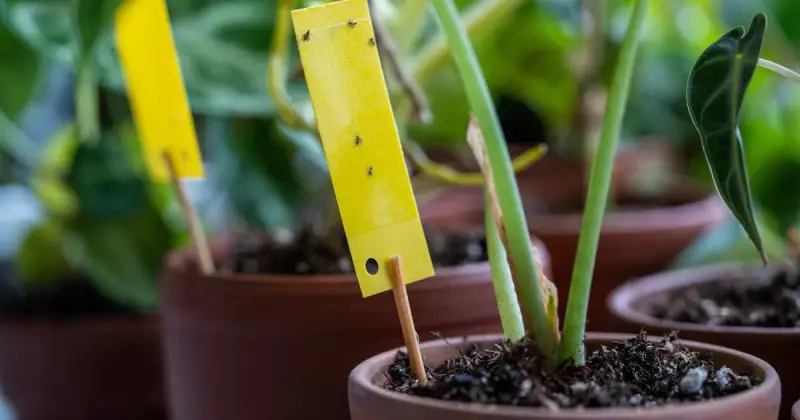
Spider mites cause visible damage to plants through webbing and stippling, which are tiny, pinpoint dots or specks that appear on the leaves and thrive in hot, dry conditions. 1
Thrips are slender insects that create scars on plants and can spread plant viruses. To control these pests, greenhouse operators often adopt Integrated Pest Management (IPM), which includes using biological control agents to maintain pest populations at manageable levels.
Stippling is often caused by piercing-sucking insects, such as spider mites, aphids, or thrips, feeding on the plant’s sap. Prompt identification and treatment of the underlying pest problem are essential to prevent further damage and protect plant health.
While stippling may seem like minor damage to the naked eye, it can significantly affect plant health, including:
1. Reduced photosynthesis
2. Nutrient loss
3. Infections by pathogens such as fungi and bacteria
4. Plant stress
Natural Predators For Pest Control
Ladybugs and lacewings are vital for pest control in greenhouses. They feed on harmful insects like aphids and whiteflies, helping to maintain plant health. By introducing these natural predators, greenhouse owners can create a balanced ecosystem that regulates pest populations without relying on chemicals. It is also a sustainable and effective way to manage pests, promote plant health, and reduce the need for chemical interventions.
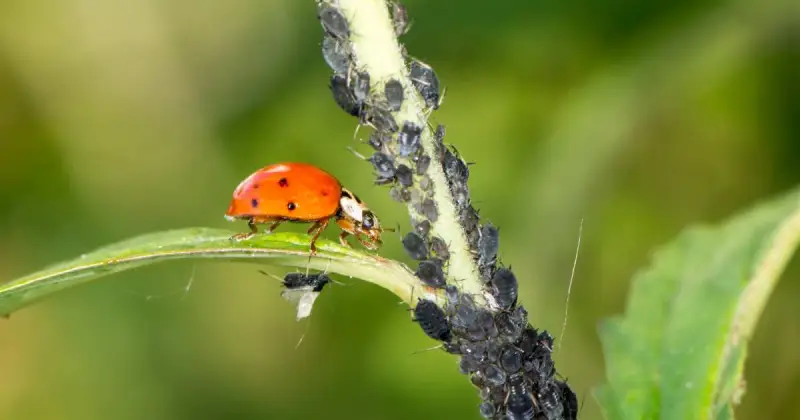
Beneficial Insects
Ladybugs and lacewings control pests such as aphids, whiteflies, and thrips in greenhouses. These insects are crucial for managing pest populations without damaging the plants or the surrounding environment. Ladybugs, with their distinctive red appearance, reproduce efficiently, offering a continuous solution for pest management.
Neem oil is a natural insecticide that fights several pests, including aphids, whiteflies, and mealybugs. Furthermore, homemade horticultural soap can be used against various pests, including spider mites, to protect greenhouse environments and significantly contribute to a healthier greenhouse ecosystem. 2
Predatory Mites
Predatory mites play a crucial role in managing pest populations within greenhouse environments. As natural pest control agents, these organisms target and consume various pest species, including spider mites, thrips, and whiteflies.
By preying on these detrimental pests, predatory mites help to regulate their numbers, thereby reducing the reliance on chemical pesticides. Introducing these beneficial mites into greenhouses promotes a more balanced ecosystem where natural mechanisms effectively control pest levels. Below is a brief summary of how predatory mites contribute to a healthier greenhouse environment:
| Predatory Mites | Role in Pest Management |
|---|---|
| Consume pest species | Manage detrimental populations |
| Act as natural control agents | Decrease chemical pesticide usage |
| Promote ecosystem balance | Ensure a healthier environment |
This approach supports sustainable agricultural practices and fosters an environment where plants can thrive with minimal chemical intervention.
Effective Organic Pest Management Solutions
Adopting various organic pest control strategies is crucial for a healthy, pest-free greenhouse. Organic methods such as Neem oil and introducing beneficial insects can effectively manage pests. These natural approaches help prevent and eliminate pests without using harmful chemicals.

Moreover, deploying homemade solutions like Pyola, Diatomaceous Earth, kelp & soap spray, chili & garlic spray, sticky traps, Wormwood, and yellow plates coated in olive oil offers a layered and robust defense against invading pests.
To achieve effective pest management, it is best to use organic solutions, including insecticidal soap, companion herbs, and garlic spray, maintain cleanliness, and rotate crops.
Home growers should also focus on soil health by amending soil as necessary and correcting nutrient imbalances to enhance plant immunity and pest resistance. Regularly monitoring soil moisture, assessing plant health at various growth stages, and applying pest management techniques from seeding to post-fruiting are crucial for organic pest control in greenhouses. 3
Conducting regular soil tests are also crucial for greenhouse operations as they provide essential information about the soil’s health and fertility. By analyzing the soil, growers can determine its nutrient content, pH levels, and other factors that affect plant growth, which is vital for making informed decisions about fertilization and soil amendment practices.
Proper soil management is essential for ensuring optimal plant growth and health in a greenhouse environment where plants are grown in containers or beds. Soil tests further help greenhouse growers identify nutrient deficiencies or imbalances that may hinder plant growth.
By addressing these issues, growers can tailor their fertilization practices to meet the specific needs of their crops, leading to healthier plants and higher yields.
Soil tests can also help greenhouse growers prevent environmental issues like nutrient runoff. By understanding the nutrient content of the soil, growers can apply fertilizers more efficiently, reducing the risk of excess nutrients leaching into the environment, thereby protecting the surrounding ecosystem and helping growers save on fertilizer costs.
Identifying pests in your greenhouse garden is easy once you know what you’re looking for. From their unique advantages to the damage left behind, beneficial bugs and dangerous invaders alike can be easy to identify and treat through various integrated pest management methods. Check out the instructive video below that explains pest identification, unique considerations of insects, and how they play a part in your foliage.
Monitoring And Intervention Techniques
To effectively manage pests in greenhouses, it’s critical to conduct regular inspections of plants for symptoms of pest activity. Look for signs such as leaves turning yellow, abnormal growth patterns, or a sticky substance on plants, which could indicate an infestation.
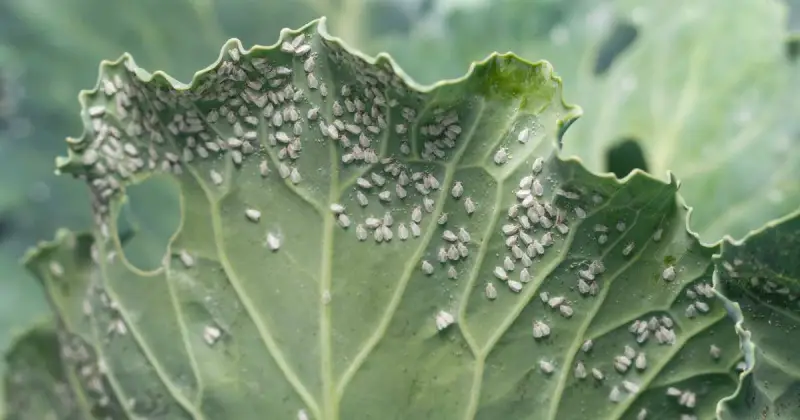
Employ monitoring tools like sticky traps and yellow plates coated with olive oil to capture flying insects like whiteflies and fungus gnats. Magnification devices are essential for identifying smaller pests on plant surfaces, such as spider mites or thrips, ensuring early detection and preventative maintenance. 4
Upon detecting pests, it is essential to act quickly using environmentally friendly treatments such as Neem oil or insecticidal soap. Introducing beneficial organisms into the greenhouse environment can also play a significant role in managing pest populations.
Adopting cultural practices that include proper watering and ensuring adequate ventilation can help create conditions less conducive to pest invasions.
Keeping accurate records of observed pests and the methods used to address them is crucial for refining pest management strategies, leading to more efficient control measures. Consistent pest monitoring is vital for maintaining a healthy greenhouse environment.
Collaboration For Pest Control Success
Collaborating with other greenhouse workers, researchers, and local extension agents is essential for effective pest management. We enhance our collective ability to control pests by exchanging insights and successful strategies with other like-minded growers, both in our local area and virtually.
Working together, we can conduct comprehensive pest surveillance and employ biological control techniques, ensuring a healthy and productive greenhouse environment. 5
Teamwork For Pest Control
Remember, consistent communication and learning are essential among growers who wish to remain informed about pest management actions and maintain a healthy greenhouse environment. This approach includes employing cultural practices, utilizing biological agents, and setting up physical barriers to deter pests.
| Pest Control Methods | Integrated Pest Management | Greenhouse Conditions |
|---|---|---|
| Cultural Practices | Biological Agents | Physical Deterrents |
Shared Pest Control Strategies
Achieving effective pest control in greenhouses requires collaboration among owners. Working together enhances our ability to manage pests by sharing insights on outbreaks and successful treatments. This collective approach allows us to combine resources to purchase beneficial insects or organic control solutions, reducing costs and supporting eco-friendly methods.
Coordinated efforts are crucial in preventing pests from moving between greenhouses, thus protecting our crops. By forming a community network focused on pest management, we facilitate mutual support and knowledge exchange, improving outcomes. We can more efficiently safeguard our greenhouses through joint strategies and a commitment to cooperative action.

Joint Pest Monitoring
Collaborating with other growers, researchers, and extension services enhances our ability to monitor pest populations in greenhouses, leading to a more proactive and efficient approach to pest control. Working together on pest monitoring can improve outcomes in managing pests.
Here are three key advantages of collective pest monitoring:
- Exchanging Information: Collaboration enables us to share essential data about pest occurrences, behaviors, and management strategies, broadening our collective understanding.
- Prompt Identification: Joint efforts facilitate the quick detection of pest infestations, allowing for timely intervention with control measures.
- Improved Control Strategies: By combining our resources and expertise, we can develop more effective pest management solutions, resulting in less crop damage and higher greenhouse productivity.
Sustainable Pest Control Practices
Sustainable pest control in greenhouses focuses on minimizing chemical pesticides by promoting biological control methods. Incorporating beneficial insects such as ladybugs and lacewings helps manage pest populations effectively without relying on harmful chemicals.
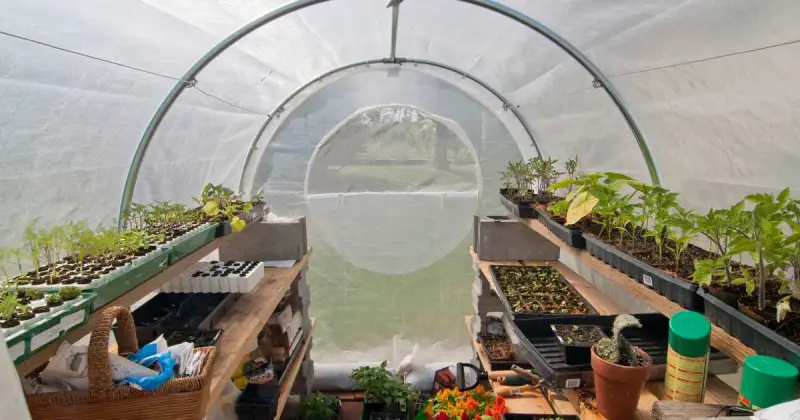
These beneficial garden predators control notorious pests like aphids, whiteflies, and thrips, ensuring a balanced ecosystem. Organic alternatives, such as Neem oil and horticultural soap, offer efficient pest management solutions that are safe for your crops and the environment. 6
Integrated pest management strategies are crucial for sustainable pest control, combining techniques to reduce pest impact. A holistic approach that includes biological control, organic solutions, and regular monitoring practices establishes a conducive environment with reduced chemical dependency. Adopting these sustainable practices safeguards crops and promotes a healthier, more balanced greenhouse ecosystem.
New Strategies For Pest Control
Exploring soil health improvement as a pest control strategy has shown promising results. Enhancing soil quality can lead to more robust, more resilient plants that are less vulnerable to pests.
Techniques like crop rotation, cover cropping, and adding organic matter can significantly improve soil health. Additionally, implementing physical barriers such as insect nets and floating row covers can provide an extra layer of protection against pests, reducing the need for more severe interventions with harsh, synthetic chemicals.
These innovative approaches complement traditional methods, offering a comprehensive pest management system that supports sustainable agriculture.
Soil health plays a significant role in influencing garden pests in several ways. Healthy soil supports vigorous plant growth, enhancing plant resilience to pest attacks. Plants grown in healthy soil are often better equipped to withstand pest pressure due to their stronger immune systems and higher nutrient content.
Furthermore, healthy soil promotes a diverse and balanced ecosystem underground, including beneficial microorganisms and insects that can help control pest populations. These beneficial organisms can compete with pests for resources or directly attack pest species, helping to keep their numbers in check.
Conclusion
Maintaining a healthy greenhouse environment demands constant vigilance and a proactive approach to pest control. Greenhouse owners can keep pest populations under control by recognizing common pests early, leveraging natural predators, employing organic methods, and consistently monitoring for any signs of infestation.
It’s all about prevention – taking steps before problems escalate can save your plants from harm. As you nurture your greenhouse, let the commitment to sustainable pest management inspire you to create a thriving, vibrant ecosystem.
By implementing these pest control methods, you can effectively manage pest populations in your greenhouse and protect your plants from damage. After all, the health of your plants reflects the care and attention you invest in them.
Have you had to fight back against encroaching pest invaders in your backyard greenhouse? You may have used a strategy listed in this article or implemented one we didn’t touch on. Please share with your fellow home growers and drop us a line in the comment section below with your successful tips!
SOURCES
- Frontiers – Automatic Pest Identification System In The Greenhouse Based On Deep Learning And Machine Vision
- National Library Of Medicine, National Center For Biotechnology Information – Evaluating The Link Between Predation And Pest Control Services In The Mite World
- National Library Of Medicine, National Center For Biotechnology Information – The Future Of Organic Insect Pest Management: Be A Better Entomologist Or Pay For Someone Who is
- South Dakota State University, Extension – Organic Pest Control Methods
- University Of Illinois Urbana-Champaign, College Of Agricultural, Consumer & Environmental Sciences – Organic Pest Control
- North Carolina State University, Extension – Organic Pest Management


